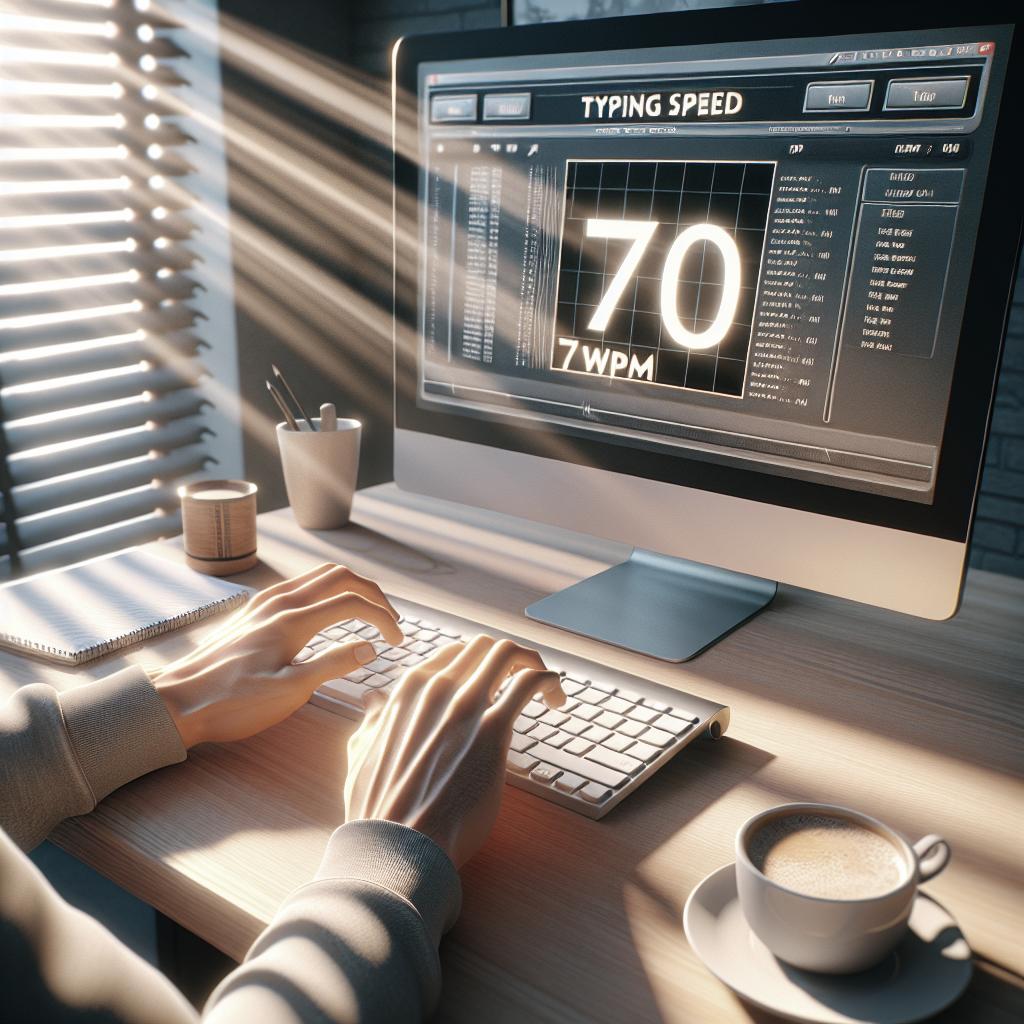“`html
Is 70 WPM Good? A Comprehensive Look into Typing Speeds
Typing speed is a crucial skill in today’s digital world, especially with the rise of remote work and online communication. Many people strive to improve their typing efficiency to boost productivity. A typing speed of 70 words per minute (WPM) is often sought after, but is it really a good target? In this blog post, we will delve into the significance of a 70 WPM speed. We’ll explore how you can improve your typing speed, determine suitable speed targets, and provide insights into what your next steps could be. Whether you’re a beginner looking to speed up your typing or a seasoned typist aiming for further improvement, this article will offer valuable perspectives to help guide your journey.
Do you want to improve your typing speed?
Improving typing speed can lead to significant advantages, particularly as the modern workplace increasingly relies on digital communication. Faster typing speeds can enhance your productivity, enabling you to manage emails swiftly, draft documents efficiently, and enter data without hassle. This fluidity not only saves time but also reduces the cognitive load, allowing you to focus more on the task than the mechanics of typing.
For those pursuing careers in fields where rapid typing is a requirement—such as journalism, data entry, or administrative roles—achieving a desirable WPM can be a career asset. Even outside such niches, faster typing can enhance your online interactions, streamline collaborative projects, and empower you to articulate thoughts quickly while they are fresh, thus fostering creativity and idea sharing.
Moreover, an improvement in typing speed often leads to enhancements in typing accuracy. Regular practice and focused exercises can help identify and rectify errors, teach proper hand positioning and finger movements, and give you a sense of rhythm and flow when typing. As a result, increasing your speed will naturally complement an improvement in overall typing proficiency, making you a confident, reliable, and competent typist.
Which speed target should you set?
Previous
Historically, the average typing speed for most people hovers around 40 WPM, with more professional typists reaching speeds closer to 50-70 WPM. Achieving a speed of 70 WPM places you well above the general average, and historically, it would have been considered very competent, especially in administrative and clerical roles where swift typing is advantageous. Decades ago, typists used manual typewriters which required more effort and time per key press, making today’s digital typing feats even more impressive.
During the age of typewriters, secretaries and typesetters would aim for speeds upwards of 75 WPM, mainly due to the constraints of the technology and the physical strain it could cause. Therefore, hitting 70 WPM back then required both speed and precision, attributes still valuable in today’s keyboard-based environments. Historically, typing speeds lower than 70 WPM were sufficient for most clerical jobs, primarily given the difficulty of correction and editing errors directly on the manifold paper.
Next
If you’re aiming to improve on a 70 WPM speed, understanding your ultimate typing goal is key. Professionals in high-output scenarios, such as transcriptionists or court reporters, often aim for speeds beyond 80 or even 100 WPM with very high accuracy. These targets not only facilitate rapid job execution but also demonstrate a level of competency that is often required. Additionally, industries where typing forms the backbone of the profession, such as software development or academia, consider higher WPM rates beneficial for quicker coding, content creation, and research documentation.
Your next target may depend on your field of work or personal efficiency goals. If you’re a hobbyist typist or general user aiming to enhance productivity, maintaining your speed while gradually improving accuracy might be sufficient. However, if your profession demands swift and accurate typing, setting a higher target would be advantageous for keeping up with industry standards or job-specific requirements. Ultimately, the decision should balance between challenge and practicality, ensuring that any new target drives improvement without causing strain or impracticality.
Developing a plan for incremental improvement, filled with short-term goals, can be particularly beneficial. Tools such as online typing tests, speed drills, and typing software can aid in tracking your progress and identifying weaknesses. Remember to monitor both speed and accuracy to ensure comprehensive enhancements, paving the way for you to reach or even exceed your target efficiently.
Final Thoughts
Typing speeds vary greatly depending on the individual’s profession, goals, and desire for improvement. A speed of 70 WPM is generally considered quite competent and provides a solid foundation to build upon. Whether you are motivated by professional aspirations or personal goals, knowing your strengths and areas for potential improvement can guide you effectively toward becoming a more proficient typist.
Regardless of your current speed, regular practice and focused improvement efforts can yield tangible results. Today’s technology offers myriad resources to hone skills, from online testing platforms to apps geared towards speed and accuracy training. By setting realistic, incremental goals, you can work towards a higher daily output, reducing stress and increasing productivity.
In conclusion, a 70 WPM typing speed is impressive, placing you above average in many typing-focused fields. However, always strive for balance: continue to stretch your skills and explore tools and techniques to increase both speed and precision. This mindset will undoubtedly aid you in navigating the evolving demands of the digital workplace.
| Aspect | Insights |
|---|---|
| Benefits of Improving Typing Speed | Increased productivity, enhanced accuracy, valuable professional skill. |
| Historical Context of 70 WPM | Considered above average, advantageous in clerical roles, impressive in the typewriter era. |
| Future Typing Speed Targets | Profession-driven goals, higher targets for transcription and specialized roles. |
| Approach to Improvement | Incremental goals, use of typing tools and tests, emphasis on accuracy and speed. |
“`


